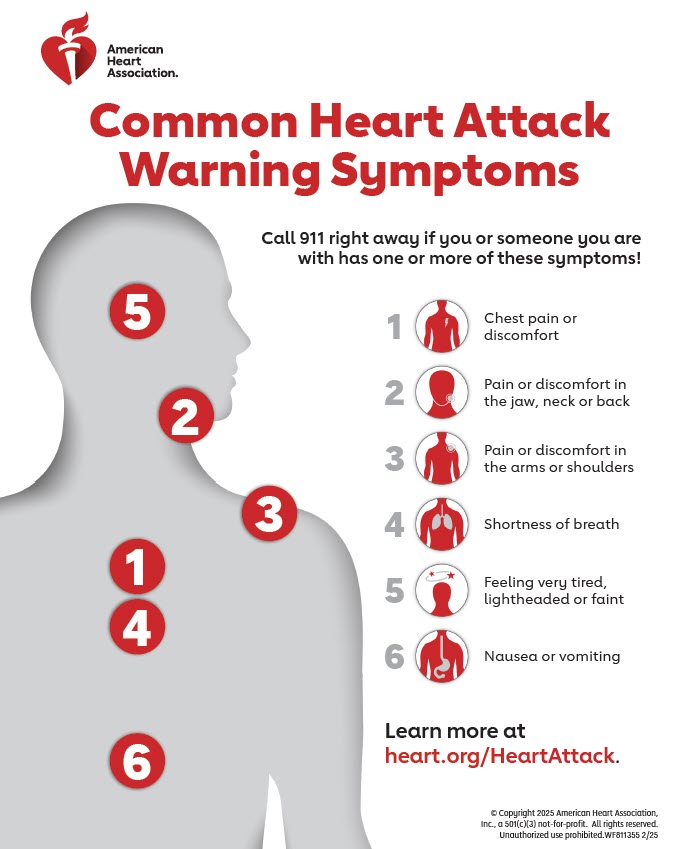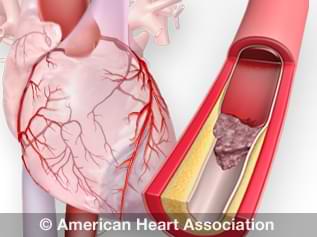Warning Signs of a Heart Attack
Quick Facts
- Call 911 if you have any symptoms of heart attack.
- Symptoms vary between men and women. It’s important to know the differences.
Catch the signs early
Don’t wait to get help if you have any heart attack warning signs. Some heart attacks are sudden and intense. Others start slowly with mild pain or discomfort. Pay attention to your body and call 911 if you have:
- Chest discomfort. Most people having a heart attack feel discomfort in the center of the chest. It can last more than a few minutes, or it may go away and then return. It can feel like uncomfortable pressure, squeezing, fullness or pain.
- Discomfort in other areas of the upper body. Symptoms can include pain or discomfort in the:
- Arms (one or both)
- Back
- Neck
- Jaw
- Stomach
- Shortness of breath. This can happen with or without chest discomfort.
- Other signs. Other possible signs include:
- Breaking out in a cold sweat
- Nausea
- Rapid or irregular heartbeat
- Feeling unusually tired
- Feeling lightheaded
View the common heart attack warning symptoms infographic (PDF)
Symptoms vary between men and women
As with men, women’s most common heart attack symptom is chest pain (angina) or discomfort. But women may have other symptoms that are typically less associated with heart attack, such as:
- Anxiety
- Shortness of breath
- Nausea
- Vomiting
- Upset stomach
- Pain in the shoulder, back or arm
- Unusual tiredness and weakness
Learn about the warning signs of heart attack in women.
Don’t hesitate to call 911
Learn the signs of heart attack. Even if you’re not sure it’s a heart attack, get checked out.
Minutes matter. Fast action can save lives – maybe your own.
Call 911 if you have heart attack warning signs. It's almost always the fastest way to get lifesaving treatment.
An emergency medical services (EMS) team can begin treatment when they arrive. EMS staff are also trained to give resuscitation efforts to someone whose heart has stopped. People with chest pain who arrive by ambulance may also get faster treatment at the hospital.
For many reasons, it’s best to call 911 so a trained EMS team can begin treatment and arrange rapid transport to the emergency room.
Watch an animation of a heart attack.
Learn more:
Heart Attack Tools and Resources
- What Are the Warning Signs of Heart Attack? (PDF)
- What is a Heart Attack? (PDF)
- How Will I Recover? (PDF)
- Heart Attack Discharge Worksheet (PDF)
- Heart Attack Discharge Worksheet (Spanish) (PDF)
- 5 Ways to Lower Your Risk of a Second Heart Attack (PDF)
- 5 Ways to Lower Your Risk of a Second Heart Attack - Spanish (PDF)
- Cardiac Rehab Referral Card (PDF)
- Cardiac Rehab Referral Card (Spanish) (PDF)
- Common Heart Attack Warning Signs (PDF)


